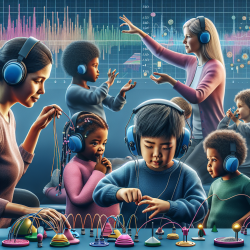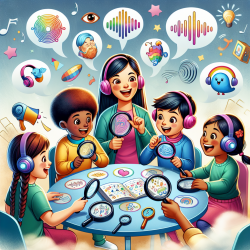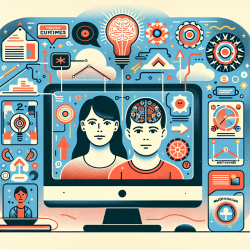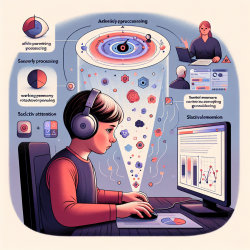Introduction
As a speech-language pathologist, your goal is to improve communication outcomes for children. Recent research, particularly the study titled "Immediate improvement of speech-in-noise perception through multisensory stimulation via an auditory to tactile sensory substitution," offers promising insights into enhancing speech perception in challenging environments. This blog will explore how you can leverage these findings to improve your practice.
Understanding the Research
The study conducted by Cieśla et al. (2019) investigates the impact of multisensory stimulation on speech perception in noise. The researchers developed an audio-to-tactile sensory substitution device (SSD) that transforms low-frequency speech signals into tactile vibrations. This device was tested on participants who demonstrated immediate and significant improvement in speech recognition, with an average group-level improvement of 6 dB in signal-to-noise ratio.
Practical Implications for Practitioners
For practitioners working with children, these findings highlight the potential benefits of incorporating multisensory stimulation into therapy sessions. Here are some practical ways to implement these insights:
- Incorporate Tactile Stimulation: Use tactile devices to complement auditory stimuli during therapy sessions. This can be particularly beneficial for children with hearing impairments or those struggling with speech perception in noisy environments.
- Multisensory Training: Design therapy programs that integrate auditory and tactile inputs. This approach can enhance the child's ability to process and understand speech in challenging settings.
- Personalized Therapy: Tailor the use of multisensory devices based on the individual needs of each child. Consider factors such as the child's hearing ability, cognitive load, and sensory preferences.
Encouraging Further Research
While the study provides compelling evidence for the benefits of multisensory stimulation, further research is needed to explore its long-term effects and applicability across different populations. Practitioners are encouraged to contribute to this growing body of knowledge by conducting their own research and sharing findings with the community.
Conclusion
Incorporating multisensory stimulation into speech therapy has the potential to significantly improve communication outcomes for children. By embracing data-driven approaches and staying informed about the latest research, practitioners can make informed decisions that enhance the effectiveness of their interventions.
To read the original research paper, please follow this link: Immediate improvement of speech-in-noise perception through multisensory stimulation via an auditory to tactile sensory substitution.










